The Med-Tech Investment Landscape in Africa: Trends, Opportunities, and Gaps
This white paper explores the rapidly evolving med-tech investment landscape across Africa, analyzing funding trends, top-performing sectors, ecosystem challenges, and opportunities for both local and global investors. It provides strategic insights for entrepreneurs, investors, policymakers, and development partners.

Abstract
Africa's medical technology (med-tech) sector is gaining traction among local and international investors, driven by rising healthcare needs, mobile penetration, and innovation hubs. Yet funding remains highly uneven, with diagnostics, AI, and telemedicine startups receiving most attention, while medical device manufacturing and B2B health platforms lag behind. This white paper provides a deep dive into the current med-tech investment landscape in Africa, highlighting opportunities, case studies, and strategies to unlock inclusive, sustainable growth.
1. Introduction
Africa bears 24% of the global disease burden but receives only 1% of global health expenditure (WHO, 2023). With over 1.4 billion people, rising chronic disease rates, and gaps in health infrastructure, technology-driven solutions have become a crucial frontier. The continent has witnessed a surge in health-tech entrepreneurship over the past decade—especially in diagnostics, mobile health, and digital insurance.
The global med-tech market was valued at USD 574 billion in 2023 and is projected to reach USD 800+ billion by 2030 (Fortune Business Insights, 2023). Africa’s share remains small, but growth is accelerating.
2. Defining Med-Tech in the African Context
Med-tech encompasses:
-
Diagnostic devices & kits
-
Telemedicine platforms
-
AI-powered triage and health chatbots
-
Electronic Health Record (EHR) systems
-
Wearable & IoMT (Internet of Medical Things)
-
Mobile health (mHealth) applications
-
Medical equipment manufacturing
-
Digital insurance & health fintech
Unlike the West, much of Africa’s med-tech focus is on accessibility, affordability, and leapfrogging infrastructure gaps.
3. Investment Trends (2019–2024)
3.1 Regional Distribution
| Region | % of Health-Tech Funding | Top Countries |
|---|---|---|
| West Africa | 38% | Nigeria, Ghana |
| East Africa | 27% | Kenya, Rwanda |
| Southern Africa | 23% | South Africa |
| Francophone Africa | 8% | Senegal, Côte d’Ivoire |
📊 Source: Partech Africa, Disrupt Africa, Salient Advisory (2024)
3.2 Investment Types
-
Seed and Series A dominate (80%)
-
Few Series B+ rounds (under 10% of total volume)
-
Growth equity and impact investment slowly increasing
3.3 Key Investors
-
Local: Novastar, Future Africa, Kepple Africa Ventures
-
International: Bill & Melinda Gates Foundation, IFC, EchoVC, Johnson & Johnson Impact Ventures
-
Accelerators: Villgro Africa, HealthTech Hub Africa, Google for Startups, Y Combinator
4. High-Impact Sectors
| Sector | Description | Example Startups |
|---|---|---|
| Diagnostics | Low-cost test kits, AI-supported lab tech | mPharma (Ghana), 54gene (Nigeria) |
| Telemedicine | Virtual consults, remote diagnostics | Rocket Health (Uganda), Vezeeta (Egypt) |
| Supply Chain Tech | Last-mile delivery, e-pharmacy | Zipline (Rwanda/Ghana), Field Intelligence |
| Digital Insurance | Micro-health cover, claim automation | Turaco (Kenya), Reliance HMO (Nigeria) |
| AI/ML & Analytics | Risk scoring, disease forecasting | LifeBank (Nigeria), Baobab Circle |
5. Case Studies
🇬🇭 Ghana – mPharma
A pharmacy and diagnostics supply chain startup that has raised over $90 million. It manages inventory for 850+ pharmacies and supplies low-cost diagnostics.
🇰🇪 Kenya – Turaco
A microinsurance startup offering embedded health cover via telcos and banks. Raised over $10 million from impact investors.
🌍 Zipline
Drone-enabled supply chain network operating in Rwanda, Ghana, Kenya, and Nigeria. Backed by Andreessen Horowitz and Goldman Sachs.
6. Challenges and Gaps
| Challenge | Explanation |
|---|---|
| Funding Concentration | Most investment goes to 10–15 well-known startups in select regions |
| Hardware Hesitation | Investors prefer software due to scalability and lower CapEx |
| Regulatory Barriers | Unclear or inconsistent med-tech approvals and IP protection |
| Currency and Exit Risks | Local currency depreciation, lack of IPO or acquisition pathways |
| Talent Shortage | Few biomedical engineers, product managers, or regulatory experts |
7. Opportunities for Growth
1. Localization of Medical Devices
-
Manufacture or assemble diagnostics and devices locally to reduce import costs
2. B2B Enterprise Health Tech
-
Tools for hospital management, health data analytics, and claims automation
3. AI in Primary Care
-
Symptom checkers, triage tools, and AI-assisted imaging
4. Francophone Africa
-
Underserved market with growing tech ecosystems in Dakar, Abidjan, and Douala
5. Health Fintech
-
Integrate digital wallets, micro-payments, and credit into healthcare access
8. Recommendations
For Investors
-
Co-invest with local funds or angel syndicates
-
Support technical assistance alongside capital
-
Explore blended finance with health-focused donors
For Governments
-
Create clear regulatory pathways for device and digital health approval
-
Offer tax breaks or incentives for local production and R&D
-
Promote public-private partnerships (PPPs)
For Startups
-
Prioritize clinical validation and evidence generation
-
Build inclusive, user-tested solutions for low-income populations
-
Engage policymakers early in product design
9. Conclusion
Africa’s med-tech sector offers significant long-term returns—not just financially, but in improved public health and economic resilience. By closing the investment gap and nurturing local innovation, the continent can shape a more sovereign and inclusive health future. Stakeholders must move beyond pilot-stage funding and help scale the solutions built by Africans, for Africans.
References (APA 7th Edition)
Partech Africa. (2024). Africa Tech Venture Capital Report 2023.
https://partechpartners.com
Disrupt Africa. (2023). Healthtech Startups Funding Report.
https://disrupt-africa.com/reports
Salient Advisory. (2023). Innovative Health Supply Chains in Africa.
https://salientadvisory.com
World Health Organization. (2023). Health Financing in Africa.
https://www.who.int/publications/i/item/health-financing-africa-2023
Fortune Business Insights. (2023). Medical Devices Market Size Report.
https://www.fortunebusinessinsights.com
mPharma. (2024). Company Overview.
https://mpharma.com
Zipline. (2024). Autonomous Delivery in Africa.
https://flyzipline.com
Turaco. (2024). Microinsurance for Emerging Markets.
https://turaco.insure
What's Your Reaction?
 Like
0
Like
0
 Dislike
0
Dislike
0
 Love
0
Love
0
 Funny
0
Funny
0
 Angry
0
Angry
0
 Sad
0
Sad
0
 Wow
0
Wow
0
















































































